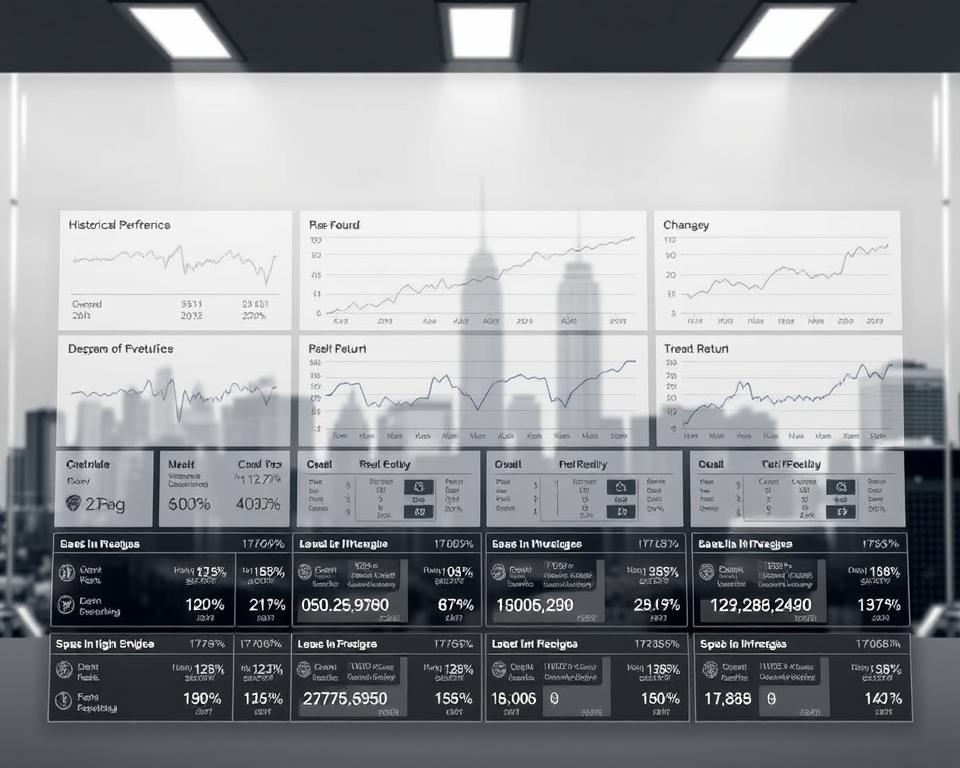Investing in CLO Equity Funds: Key Insights
Ever pondered the impact of collateralized loan obligation funds on your investment strategy? With institutional allocations increasingly favoring CLO equity funds, understanding their unique advantages is essential. These funds promise attractive returns and diversification, drawing in both seasoned private banking investors and institutions. In this article, we explore the key features of CLO equity investors, showcasing their strong quarterly payouts and adaptability to various market environments. Get ready to learn about the vital function CLOs serve in modern investing.
CLO Equity Explained
The equity slice in a CLO structure is known as CLO equity. CLOs are vehicles built around pools of leveraged loans. Investors in this field can find opportunities for solid returns with a manageable risk profile. They attract advanced investors aiming for elevated returns within a structured framework.
What is CLO Equity?
It sits at the bottom of the CLO capital stack. This tranche takes initial losses yet reaps substantial gains if the underlying loans succeed. Comprehending CLO equity involves appreciating its distinctive balance of risk and reward. Investors face higher risks but also have the chance for substantial rewards. Hence, CLO equity funds remain appealing. They offer diversified loan portfolios, potentially increasing overall returns.

Mechanics of CLO Equity Funds
These funds aggregate investments to purchase a diversified pool of leveraged loans. They run overcollateralization tests and other triggers prior to making distributions. Such a tiered payout structure directs cash first to debt tranches, then to equity holders. The waterfall structure aligns risk and potential return, appealing to investors seeking high performance with risk controls.
Why Investors Choose CLO Equity Funds
Investors seeking robust yields often favor CLO equity funds. They often yield double-digit returns, making them a standout choice in the world of alternative investments. Their structural design provides advantages absent from conventional asset classes.
Potential for Double-Digit Returns
The track record of two-digit returns draws many investors to CLO equity. It arises from targeted exposure to high-yield leveraged loans. By carefully managing loan portfolios, CLO managers can create significant value. This results in substantial annualized returns for investors.
Front-Loaded Cash Flows
The front-loaded cash flow nature of CLO equity funds is another major draw. In contrast to private equity’s delayed payouts, CLO equity begins paying within months. These distributions start just five to six months after the fund is issued. Early returns improve capital recovery prospects and cushion downside exposure.
Distinctive Features of CLO Equity Funds
Their distinct characteristics set CLO equity funds apart. Notably, they exhibit low correlation to traditional asset classes. This makes them valuable for diversifying a portfolio. It’s even more important during economic ups and downs, when other investments may falter.
Independence from Stocks and Bonds
CLO equity funds move independently of stocks and bonds. This independence helps reduce risk in a diversified portfolio. During equity drawdowns, CLO equity cash flows may remain intact. This stability helps investors keep their portfolios balanced and risk levels down.
Cash Flow Stability and Volatility Mitigation
These funds are prized for their reliable cash distributions. These funds provide steady cash flow, even when markets are volatile. Built-in features such as overcollateralization cushions support consistency. As a result, investors enjoy regular payouts, reinforcing confidence.
CLO Equity’s Role in Diversification
CLO equity funds offer significant advantages for portfolio diversification. They allow investors to expand their exposure across various industries and navigate through different market cycles. By incorporating CLOs into their strategies, individuals can effectively reduce overall risk. Their cash flow profile acts as a cushion in recessionary environments.
Diversifying across Economic Environments
Including CLOs extends exposure to both cyclical borrowers and defensive industries. The underlying leveraged loans, which include diverse borrowers, make CLOs an attractive risk-spreading tool. Investors benefit from both income generation and stability through:
- Income diversity: Cash flows derived from a range of industries.
- Risk management: Helps counterbalance downturns elsewhere in the portfolio.
- Economic resilience: CLOs’ cash flow profiles adjust according to economic conditions.
Integration with Other Investment Classes
Investors can strategically place CLO equity funds alongside traditional assets like equities and fixed income. Such allocation may improve risk-adjusted returns. It offers potential upside without concentrating risk. The combination with other investments creates an environment conducive to achieving long-term financial goals.
CLO Management Strategies
Manager expertise is critical to CLO performance. They leverage market insights to guide portfolio decisions. Such active management aims to enhance yields and manage credit dynamics.
Proactive Portfolio Techniques
Managers employ multiple tactics to drive returns. They monitor credit trends and reallocate positions accordingly. Some key strategies are:
- Dynamic trading to seize market chances.
- Risk assessment to find the best investments.
- Regular rebalancing to maintain desired exposures.
Built‑In Safeguards
CLOs have structural protections that are vital for managing risk. These safeguards ensure the CLO’s integrity and value, even in uncertain times. Important safeguards include:
- Mandatory tests to ensure collateralization.
- Waterfall payment structure securing equity cash flows.
- Measures to handle credit decline.
Active strategies plus structural buffers work to mitigate risks. Together, they strive to boost yields while controlling exposures.
Understanding CLO Equity Risks
Awareness of key risk drivers is crucial for CLO equity investors. It’s key to grasp credit risk and loan prepayments. Knowing these factors helps investors make informed decisions that align with their goals.
Understanding Credit Risk
Default probability drives a large portion of CLO equity outcomes. The risk that underlying borrowers fail to meet obligations. Such events may interrupt expected payouts. To manage this risk, investors should focus on selecting experienced CLO managers. Their expertise can significantly reduce credit risk.
Prepayment Risk
Loan prepayments add complexity to CLO equity investments. Early repayments may lead to reinvestment challenges and timing mismatches. This disruption affects the expected distributions to investors. Awareness of prepayment profiles and flexible reinvestment plans help manage this risk.
Accessing CLO Equity Investments
Investors have several ways to get into CLO equity, each with its own benefits. Understanding each route ensures alignment with objectives and risk appetite.
Captive CLO Equity Funds
These pooled vehicles suit those seeking simplicity and professional management. They offer a mix of investments from many people. This approach delivers diversified exposure under a single manager. It’s easier and less work, yet it’s diversified and managed well.
Direct Deal-by-Deal Investments
Sophisticated investors can opt for deal-specific CLO equity stakes. They select individual tranches within new CLO issuances. While operationally demanding, it may yield enhanced returns and customization.
Multi-Asset and Opportunistic Credit Funds
Multi-asset funds are another way to get into CLO equity. They mix CLOs with other credit and asset classes. The diversified blend may smooth returns and control volatility. Ideal for investors seeking broad credit exposure in one fund.
Anticipated CLO Equity Returns
Investors looking into CLO equity need to grasp the factors influencing its performance. Past performance indicates CLO equity can outperform many conventional assets. Key factors like interest rate changes and economic shifts significantly impact market trends and CLO equity returns.
Review of Past Returns
Historical data highlights consistent yields, especially in benign environments. It has outperformed various asset classes, making it an attractive option for investors. Quality underwriting and structural protections help dampen downturn impacts.
Current Drivers of CLO Performance
Current market trends have a significant effect on CLO returns. Keeping an eye on rate pivots, default trajectories, and macro cycles is essential. An increase in interest rates can impact loan performance in CLOs, while economic downturns can raise default rates. Investors must stay informed about these trends to time their CLO equity investments effectively.
Selecting CLO Management
Choosing the right CLO manager is key to successful CLO equity investments. A manager’s experience greatly influences CLO fund performance. Seek teams with demonstrated success across credit cycles.
Importance of Manager Experience
Experienced CLO managers have the skills to evaluate credit risks accurately. Their success in different economic cycles enables them to develop strategies that withstand market changes. A skilled manager’s ability to spot profitable opportunities is often linked to the fund’s overall success.
Assessing Manager Approaches
Review managers’ investment philosophies against your comfort level. Styles range from aggressive alpha-seeking to defensive capital preservation. Clarity on approach aids in aligning performance goals and risk profiles.
Long-Term Outlook for CLO Equity Funds
The future of CLO equity funds looks bright, driven by trends in corporate financing and a growing demand for new credit solutions. Many anticipate continued opportunity amid evolving credit markets. Still, variable rates and macro risks warrant caution.
Future Market Opportunities
Indicators point to expanding opportunities in CLO equity. Important drivers include:
- Rising volume of leveraged loans
- Growing allocation to non-traditional assets
- Broadening credit opportunities in developing economies
These elements suggest a favorable environment for CLO equity managers to grow. The introduction of advanced financial products will likely make these funds more appealing. Resulting in greater market penetration for CLO equity offerings.
Potential Challenges Ahead
However, risks remain that could impact performance. Key risk factors are:
- Rate volatility altering loan yields
- Economic instability leading to increased credit defaults
- Shifts in credit environments demanding active management
To overcome these hurdles, investors should diversify and choose experienced managers. Adaptability allows capitalization on evolving market conditions. It also helps to reduce risks from unpredictable scenarios.
The Final Word
CLO equity investing offers attractive yields, portfolio diversification, and resilience. It’s essential for investors to grasp the unique aspects and structures of these funds. CLO equity funds are not just a choice; they are a way to improve portfolio management strategies.
Understanding CLO equity mechanisms, risks, and manager selection is key. It empowers investors to harness the full potential of CLO equity. It helps in achieving strong returns and supports long-term financial goals.
Adding CLO equity funds to a portfolio can make it more robust and resilient. In shifting markets, CLO equity maintains its appeal. It’s ideal for those looking to thrive in different economic conditions.


